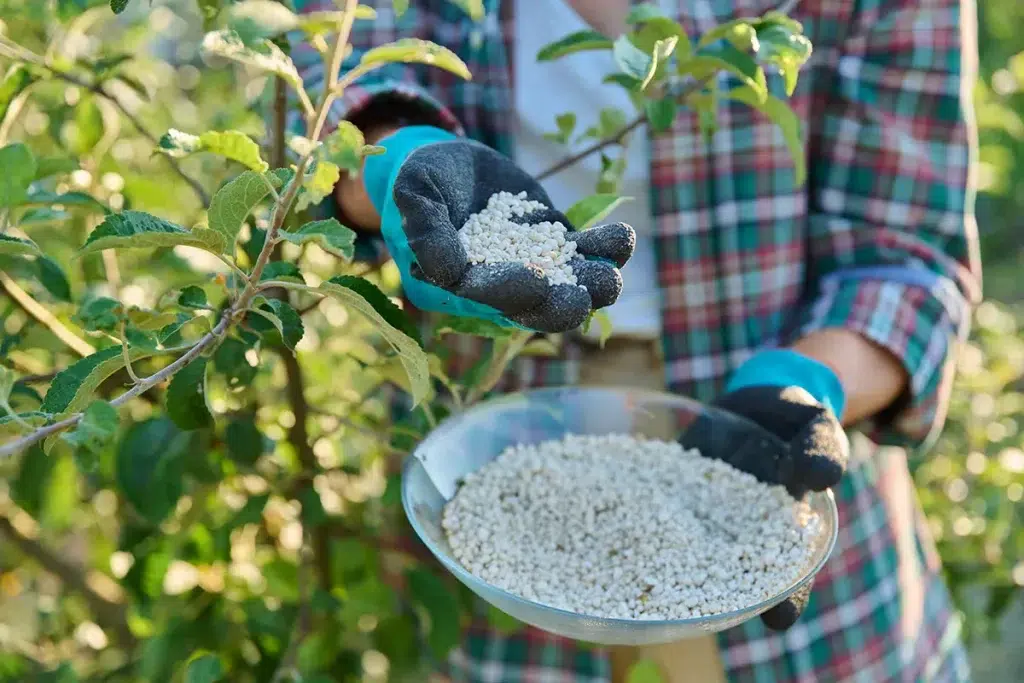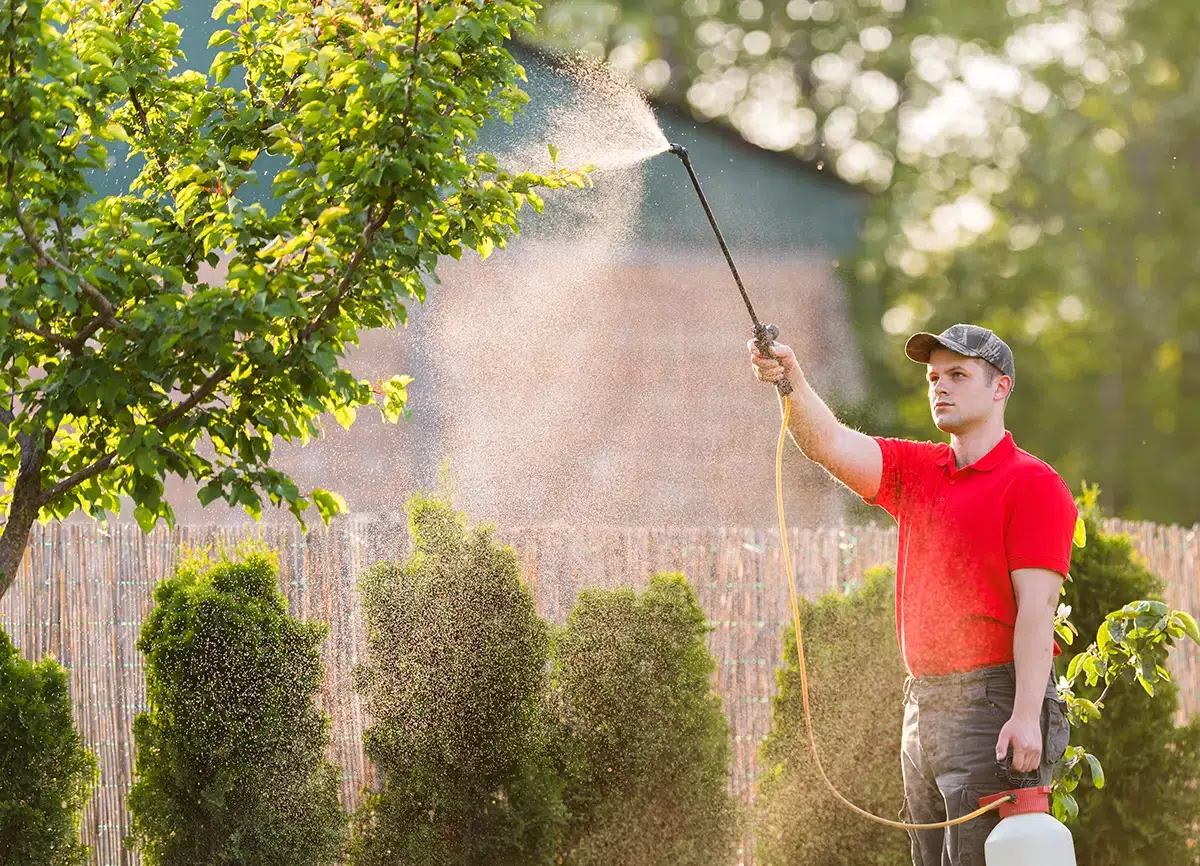As the leaves begin to turn across the Greater Pittsburgh area, many homeowners shift their attention to raking, pruning, and preparing their landscapes for colder weather. But one crucial step often goes overlooked—fall tree fertilization. Late fall is considered the optimal time for proper fertilization, especially for established trees, as it maximizes nutrient storage before winter.
At Horhut Tree Experts, we take a science-based, tree-first approach to every service we provide, and fertilization is no exception. Done properly, fall fertilization—particularly in late fall—can significantly improve your established tree’s health, root development, and resistance to stress by helping them build reserves before winter sets in.
Here’s what you need to know—and why timing and technique matter.
Why Fall Is the Ideal Time to Fertilize
Unlike the visible growth we see in spring and summer, trees shift much of their energy below ground in the fall. As soil temperatures remain warm but air temperatures cool, root systems become especially active, storing nutrients for winter and building reserves for the following spring. During this time, roots absorb water and essential elements from the soil to prepare for the next growing seasons.
Fertilizing in the fall supports this process by:
- Replenishing depleted soil nutrients after the growing season
- Promoting root growth and carbohydrate storage
- Ensuring adequate water is available so roots can absorb nutrients effectively during this period
- Enhancing resistance to winter injury and early spring pests/disease
- Correcting nutrient imbalances before dormancy
However, not all trees—or soils—require fertilization. That’s where expert diagnosis makes all the difference.
Not All Fertilizers Are Created Equal
Generic, store-bought fertilizers may do more harm than good, especially if they’re high in quick-release nitrogen or not tailored to your soil conditions. Over-fertilization can lead to weak growth, salt build-up, and increased vulnerability to disease.
Horhut Tree Experts uses custom-blended, slow-release fertilizers that are selected based on soil testing, species, site conditions, and overall tree health. Before recommending any fertilizer, we perform a soil test to determine soil pH and nutrient needs; more fertilizer is only applied if a deficiency is confirmed. Our ISA Certified Arborists follow ANSI A300 standards for soil management and plant health care—meaning every recommendation is rooted in best practices, not guesswork. In certain situations, depending on soil test results, we may use liquid fertilizer for rapid nutrient delivery and targeted feeding.
Using Organic Fertilizers
When it comes to fertilizing trees and shrubs, organic fertilizers offer a natural and effective way to supply essential nutrients for plant growth. Made from materials like compost, manure, and peat moss, organic fertilizers not only feed your trees but also improve overall soil health. Because they break down slowly, these fertilizers provide a steady, long-lasting release of nutrients—making them especially beneficial for deciduous trees throughout the growing season.
Applying organic fertilizers in early fall or late summer gives trees and shrubs the boost they need to prepare for winter, without the risk of rapid, weak growth. This slow release supports healthy development and helps maintain balanced soil conditions. Before choosing an organic fertilizer, it’s a good idea to have your soil tested. Soil tests reveal nutrient levels and help you select the right type and amount of fertilizer, ensuring your trees and shrubs get exactly what they need for robust growth and resilience.
By incorporating organic fertilizers into your fall tree care routine, you’re not just feeding your plants—you’re investing in the long-term health of your soil, your trees, and your entire landscape.
Signs Your Trees May Benefit from Fall Fertilization
While not every tree requires
fertilization, these signs may indicate a nutrient deficiency or poor soil health:
- Sparse or undersized foliage, or poor foliage growth
- Early leaf drop
- Minimal annual growth
- Poor color or chlorosis (yellowing leaves)
- Difficulty producing leaves in spring
- Recent construction or soil compaction near the root zone
If you’ve noticed any of these symptoms, now is the time to schedule a professional evaluation before the ground freezes—especially if your trees have not been fertilized in several years, as they may be more likely to show these signs.
Understanding Tree Roots
Healthy tree roots are the foundation of strong, thriving trees. The root system is responsible for absorbing water and nutrients from the soil, anchoring the tree, and supporting all aspects of growth. When you fertilize trees and shrubs, it’s important to consider how your actions affect the roots beneath the surface.
Using a slow release fertilizer is one of the best ways to promote healthy root development. These fertilizers deliver nutrients gradually, allowing tree roots to absorb what they need without the risk of overload. Over-fertilizing or using the wrong type of fertilizer can damage roots, leading to poor growth or even long-term health issues. Compacted soil and improper watering can also stress the root system, making it harder for trees and shrubs to thrive.
Regular soil tests are a valuable tool for monitoring root health. By understanding the nutrient content and structure of your soil, you can make informed decisions about how to fertilize and care for your trees. Prioritizing the needs of the root system ensures your trees and shrubs have the support they need for strong, steady growth year after year.
Our Fall Tree Fertilization Process
At Horhut Tree Experts, we take a holistic, soil-first approach. Here’s how we ensure safe and effective fall fertilization:
- Soil Testing – We analyze the existing nutrient profile, pH, and organic matter content to avoid over-treatment. In areas with sandy soils, we take special care to prevent nutrient leaching and ensure effective fertilization.
- Critical Root Zone Targeting – We apply nutrients directly into the root zone using deep root injection or soil amendments that improve structure and absorption. Deep root injection supplies nutrients directly to tree and shrub roots, promoting healthy growth and soil aeration. The same principles apply when fertilizing shrubs as well as trees.
- Custom Blends – Each prescription is tailored to the tree’s and shrub’s needs, focusing on slow-release, balanced nutrients that won’t overstimulate growth before dormancy. We also ensure mulch is managed properly so nutrients reach the root zone, and a layer of mulch can help protect against winter damage.
- Timing – Fertilization is done while soil temperatures are still active, usually from late September through early November in the Pittsburgh area.
Additionally, when fallen leaves are left in place, they contribute organic matter and nutrients to the soil, naturally enriching it for trees and shrubs.
How to Apply Fertilizer
Applying fertilizer to your trees and shrubs is more than just spreading granules on the ground—it’s about delivering nutrients in a way that supports healthy growth without causing harm. Start by selecting a slow release fertilizer, which provides a consistent supply of nutrients over time and reduces the risk of applying too much fertilizer at once.
The best time to apply fertilizer is during early fall or late summer, when trees and shrubs are still actively growing and can make the most of the added nutrients. Always follow the instructions on the fertilizer label for application rates and methods. Applying too much fertilizer can damage tree roots and disrupt soil health, so it’s important to measure carefully and avoid over-fertilization.
When you apply fertilizer, focus on the area beneath the tree’s canopy—known as the drip line—where most of the feeder roots are located. After applying, water the area thoroughly to help nutrients penetrate the soil and reach the roots. By following these steps, you’ll help your trees and shrubs absorb the nutrients they need for a healthy, vibrant landscape all year long.

Long-Term Benefits of Proper Fall Fertilization
When done correctly, fall tree fertilization is an investment in your landscape’s long-term health and prepares trees for future growing seasons, helping to prevent major problems before they start. Fall fertilization should be timed so it does not stimulate new growth, which could be vulnerable to winter injury. You can expect:
- Stronger root systems
- Better resilience to freeze-thaw cycles
- Improved spring leaf-out and flowering
- Reduced risk of disease and pests
Combined with proper pruning, mulching, and soil care, fertilization is a key component of proactive tree management.
Work With a Certified Arborist—Not a Lawn Care Company
Tree fertilization is not a one-size-fits-all service. Lawn care companies often apply high-nitrogen fertilizers that may be appropriate for turf but harmful to mature trees and shrubs.
Newly planted or young trees, as well as shrubs, require different fertilization strategies. Certified arborists understand when and how to fertilize shrubs and a new tree safely, taking into account the specific needs of newly planted specimens to avoid over-fertilization and ensure healthy establishment.
Horhut Tree Experts is family-owned, fully insured, and led by ISA Certified Arborists who specialize in tree biology, not turf management. With decades of experience and a commitment to scientific precision, we help trees thrive safely and sustainably—season after season.
Schedule a Fall Tree Evaluation Today
Most trees, as well as trees growing in urban landscapes, benefit from regular fall evaluations to ensure their health and vitality.
Don’t wait until winter stress takes its toll. Contact Horhut Tree Experts for a fall consultation and discover whether your trees could benefit from fertilization, soil care, or other seasonal services. Our team will help you make informed, environmentally responsible decisions for your landscape.
Call 412-855-2703 or schedule online to reserve your fall service window.

